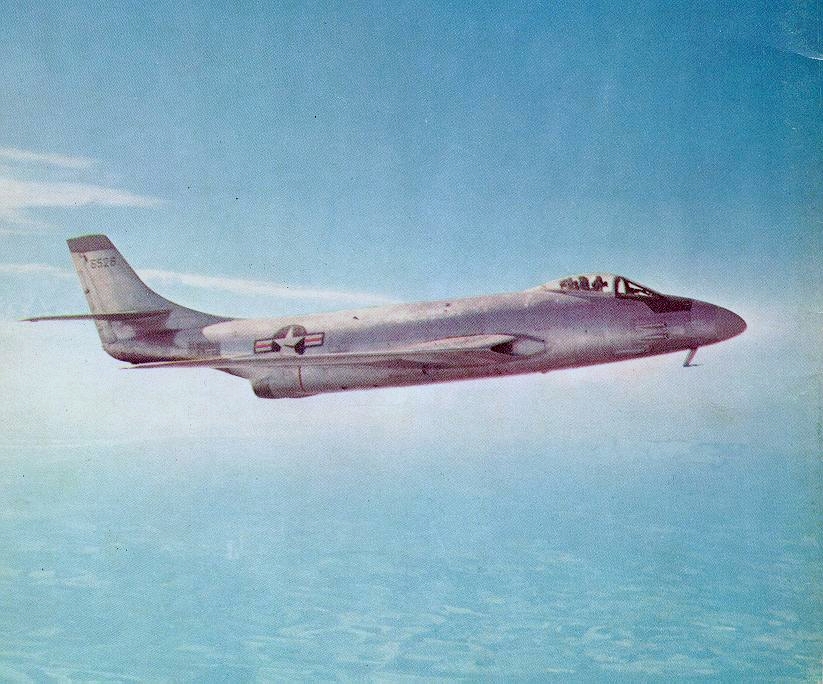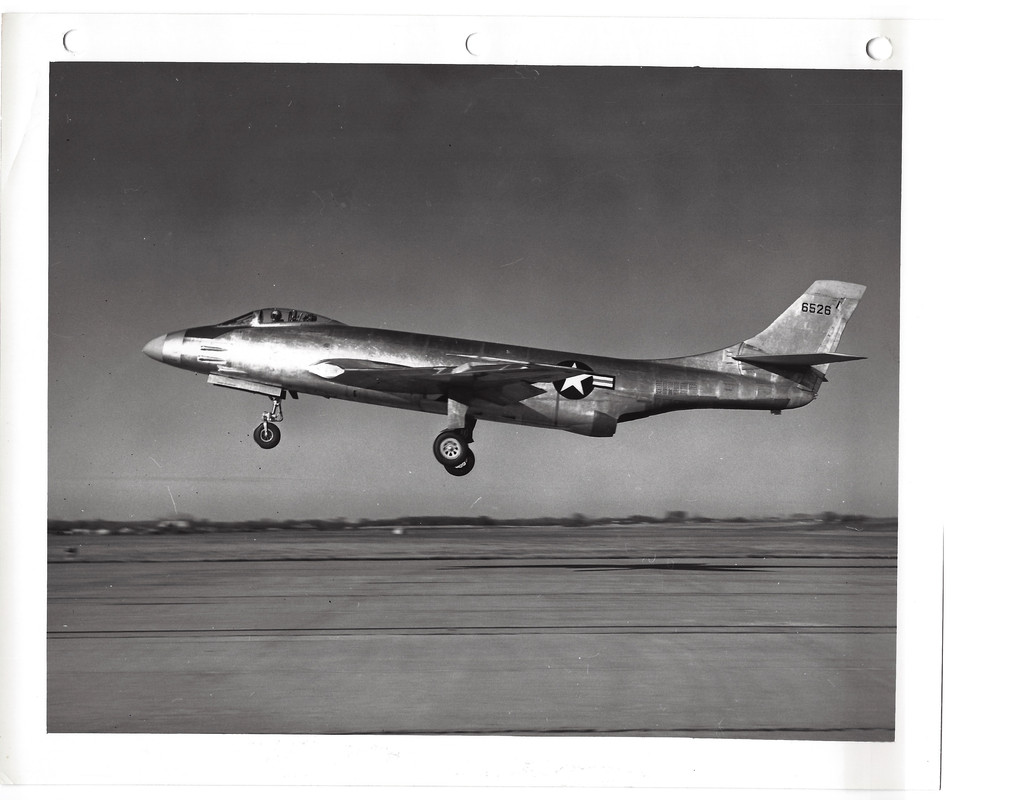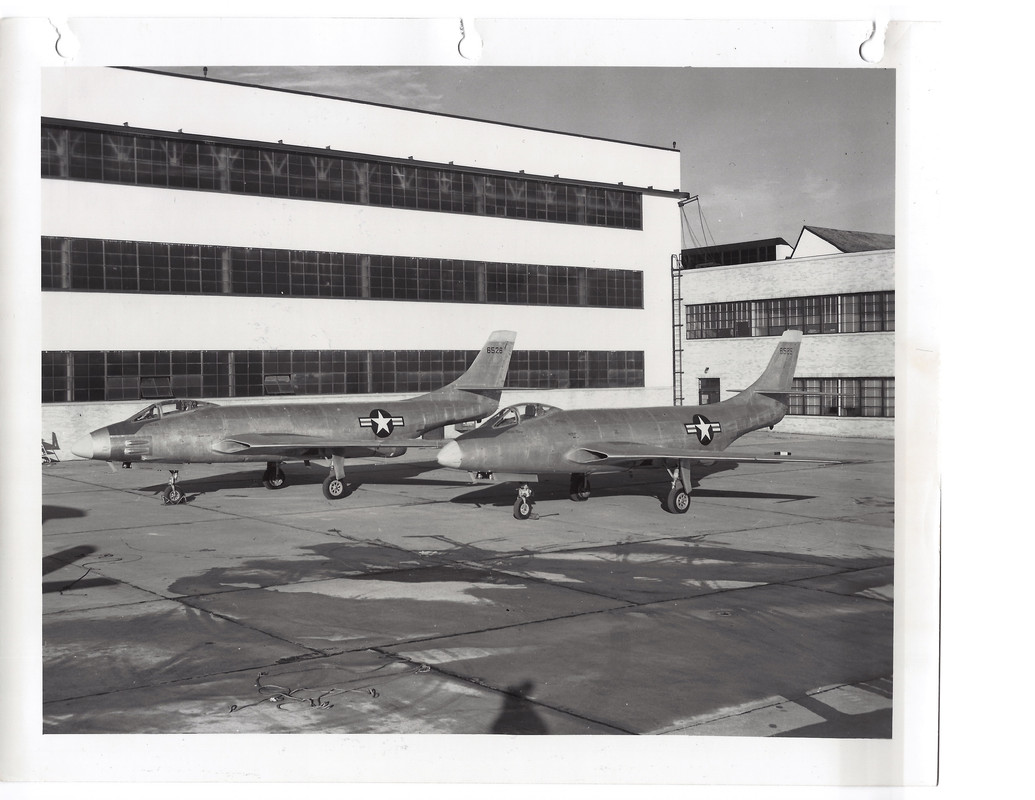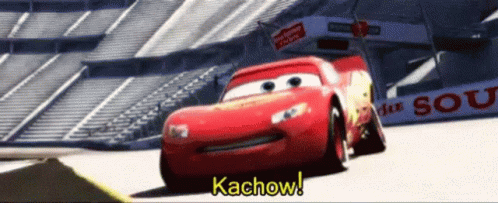- Yes, as a tech tree vehicle
- Yes, as a premium vehicle
- Yes, as an event vehicle
- Yes, as a squadron vehicle
- No, I would not like to see the XF-88A in game.
History:
The XF-88A Voodoo was the second of two XF-88 Voodoo airframes constructed and the only armed version of the XF-88 series. Like the Lockheed XF-90, the Voodoo was originally designed for the USAF’s “penetration fighter” competition. It called for a long range fighter with the endurance to escort bombers, but the performance to take on enemy fighters. The exact requirements were for 600 miles per hour max speed, 5 minutes climb to 50,000 feet, and 600 miles range with a full load of ordnance. Considering the fact that the requirement was first drawn up in 1945, the USAF was certainly forward thinking to say the least. That didn’t stop various companies from trying, though in the end only Lockheed and McDonnell would be given the funding to construct prototype aircraft.
The two XF-88 airframes next to each other. XF-88A, s/n 46-526 (front), was the armed version.
Beginning life as the McDonnell Model 36 proposal, the first XF-88, s/n 46-525, was rolled out of the factory on August 11, 1948 and first flown on October 20. This was a mere 28 months after the construction of the two planes was approved on June 20, 1946. The XF-88A wouldn’t be complete until April 1, 1949, and incorporated several improvements, namely the addition of six 20mm M24 cannons as well as an all-moving horizontal stabilizer, which was an advanced feature at the time. Both aircraft were given McDonnell-developed afterburners in 1949. Even though McDonnell was primarily a manufacturer of airframes, the afterburner tests went off without a hitch, and they were quickly able to be tested in flight.
Despite the incredibly short development time, the XF-88A Voodoo was a great success in most areas. The plane could reach 641 miles per hour in level flight, was strongly armed, stable in flight, and maneuverable. Upon competing with the XF-90 and North American YF-93 (a later shoe-in to the penetration fighter competition), the XF-88A was given first place in the penetration fighter competition. However, the Voodoo would not be slated for production, at least not this Voodoo, as none of the entries to the competition met the range and endurance requirements. Between this fact, and the fact that the USAF had no interest in penetration fighters after their experience in Korea, the XF-88A would not make it past the two prototypes. It wasn’t all bad news, though. The USAF was impressed with the design, and upon being refined into the F-101, the Voodoo was readily accepted for production.
The XF-88A prototype (background) sits next to its improved and successful cousin, the F-101A.
Design
The XF-88A incorporated various features that made it a strong aircraft. The use of an all-moving tailplane and irreversible power controls made its handling at high speed smooth and satisfactory compared to a typical stabilizer/elevator arrangement. With two Westinghouse J34 turbojet engines, as well as an in-house developed afterburner for each, the XF-88A was readily capable of reaching these high speeds. The non-afterburning XF-88 prototype was able to reach a Mach number of 1.175 in a powered S-split dive from 41,000 feet and suffered no buffeting, so the XF-88A with afterburners likely would have been able to reach even higher speeds. Armament was impressive, with six M24 20mm cannons as well as the ability to carry two 1,000 lb bombs, eight HVAR rockets, or both at once. One not-so-great feature of the Voodoo was its unique, backwards-opening speed brakes. While these theoretically would have been more effective than traditional speed brakes, buffeting problems required the drilling of many holes in the brakes, which meant that any extra effectiveness due to the way they were arranged was effectively lost.
The all-moving tail is marked with its angles of incidence in the above photograph. The exhaust pipes were originally flush with the fuselage, but upon installing the afterburners, the engine outlets were forced to protrude further.
Specifications
McDonnell XF-88A Voodoo
Dimensions:
- Span: 39.8 ft (12.1 m)
- Length: 54.2 ft (16.5 m)
- Height: 17.3 ft (5.27 m)
- Wing area: 350 ft2 (32.5 m2)
Empty Weight: 13,819 lb (6,268 kg)
Gross Weight: 18,857 lb (8,553 kg)
Takeoff Weight: 20,927 lb (9,492 kg)
Propulsion:
- 2 x Westinghouse/McDonnell J34-WE-15 afterburning turbojet engines
- 3,090 lbf (1,451 kgf) thrust dry each (6,180 lbf [2,902 kgf] thrust total)
- 4,320 lbf (1,905 kgf) thrust with afterburner each (8,640 lbf [3,810 kgf] thrust total)
Max Speed:
- 695 mph (1,118 km/h) at sea level
- 626 mph (1,007 km/h) at 35,000 ft (10,668 m)
Service Ceiling:
- 30,000 ft (9,144 m) dry
- 48,000 ft (14,630 m) with afterburner
Time to climb:
- 8 minutes to 25,000 ft (7,620 m) dry
- 6.4 minutes to 35,000 ft (10,668 m) with afterburner
Crew: 1
Armament:
- 6 x M24 20mm cannon (1,320 rounds total, 220 rpg)
- 2 x 1,000 lb bomb
- 8 x HVAR 5 in. rocket (4 x 2)
Additional equipment:
- AN/APG-30 ranging radar
Pictures
Sources
- McDonnell XF-88 Voodoo by Steve Pace (1999)
- Design and Development of the McDonnell XF-88 by Kendall Perkins and E. M. Flesh (1952)
- XF-88 and XF-88A Standard Aircraft Characteristics (1950)
- Aviation Archives: XF-88A and XF-88B Photos
- Aviation Archives: Color XF-88 Photos












